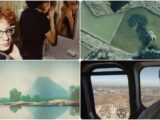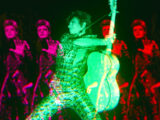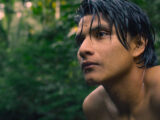The opening moments of The Image You Missed assert that this is a documentary crafted between two filmmakers, Donal Forman and Arthur MacCaig. Both men participate in an exchange that is rooted in their sense of Irish identity; the multi-hyphenate Forman was raised in Dublin, while MacCaig, an Irish-American documentarian, is best known for his work in depicting nearly 30 years of the Northern Ireland Troubles, an anti-colonial conflict between Northern Irish nationalists and British loyalists. More importantly, MacCaig also happens to be Forman’s father.
Although it includes a substantial amount of footage from the period, The Image You Missed is not so much a chronicle of the Northern Irish conflict as it is a personal essay on the part of Forman, purposed for healing in the wake of his father’s passing in 2008. Structured in three parts around a quote from Seamus Heaney’s “The Disappearing Island,” the documentary is comprised of a series of montages and voiceovers drawn from private letters, protest footage, still photography, and home movies from both men, all serving to parse through their otherwise estranged relationship.
Most impressively, the film merges two very different artistic sensibilities. In a notable sequence in the film’s second section, for example, Forman reflects that while he and his father are both activist filmmakers, they come from two very different subject positions within the Irish diaspora; MacCaig was born in New Jersey and later emigrated to Belfast, while Forman, as mentioned, was raised in Dublin, later moving to Occupy-era New York in his twenties. The two thus belong to two quite opposite cultural moments per the Troubles, with MacCaig coming of age in the midst of the movement versus Forman’s own upbringing in the wake of what he characterizes as the movement’s failure.
These differences come to define how both men, respectively, visualize the world around them. For one, Forman tends to take a more measured approach, directly contrasting his footage of the Occupy movement with his father’s more ethereal and charged gaze amid the Northern Irish struggle. Both filmmakers offer some visually striking imagery here but prove to be distinct in both timing and intensity; as a result, the film’s strongest moments tend to emerge from its archival material, rather than its more recent counterparts.
And yet, The Image You Missed still incorporates seamless cuts between the footage crafted by these otherwise disparate filmmakers. Firebrand shots from MacCaig’s first (and most successful) documentary, The Patriot Game, are complemented by Forman’s first experiments with a camera as a child, as he captures his friends pantomiming a fictional hold-up in his mother’s living room. Another powerful inclusion sees a shot-reverse-shot exchange between father and son, starting with footage on a Northern Irish train route shot decades ago by MacCaig, followed by a wide shot of the line itself crafted by Forman.
This visual give-and-take assures that The Image You Missed combines the personal and political, all converging into a broader reflection on the purpose of image-making itself. Here, the image can be used to capture moments of resistance, or even become a form of resistance itself; a montage of street art from the years of the Troubles through today comes to mind. But in a second, more intimate sense, Forman’s work is also rooted in finding and preserving the image of a singular person, a man he didn’t quite know in his own life. In a particularly revealing moment, Forman admits that he searches for reflections of MacCaig in the corners of his documentary footage, lingering on a specific shot of his father’s profile captured against a glass door. Here, the image is a form of memory, just as it is a form of activism.
Ultimately, a reflection from MacCaig regarding the power of the moving image comes to be a working mantra for the documentary: “Filmmaking is nothing more than people who find themselves in front of a camera, confronted by a filmmaker, and their own experiences.” Through repetition and montage, Forman turns his father’s words inward, concocting a powerful series of visual moments that solidify imagery itself as the only thing that connects these otherwise distant artists and family members.
Overall, The Image You Missed is more of an impressionistic exchange between two artists rather than a linear chronicle of a particular political movement. But, the documentary’s personal bent is what makes it that much more engaging, and that much more moving.




